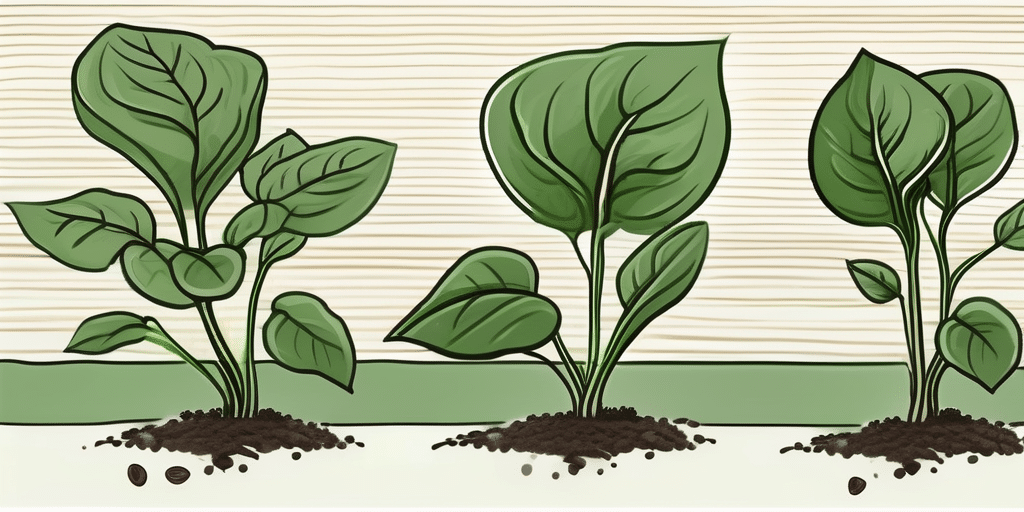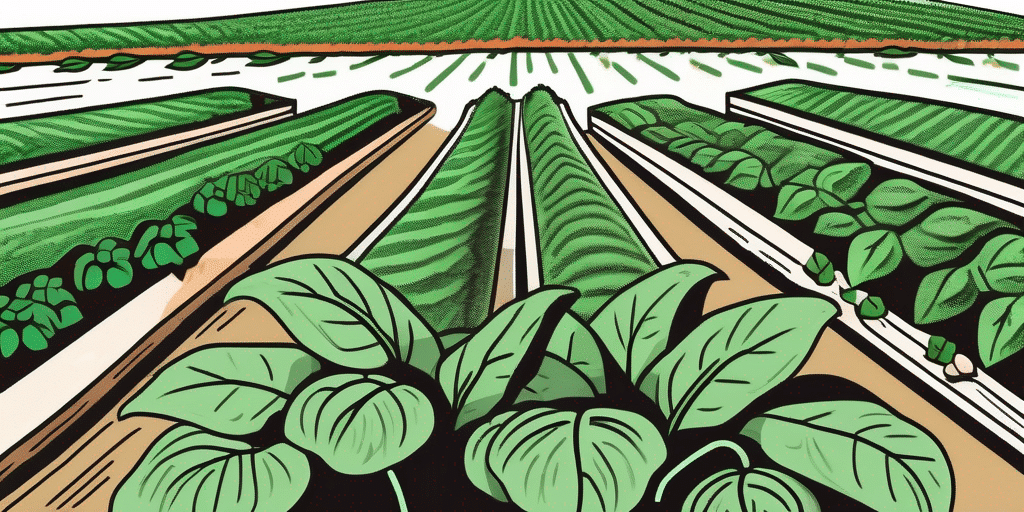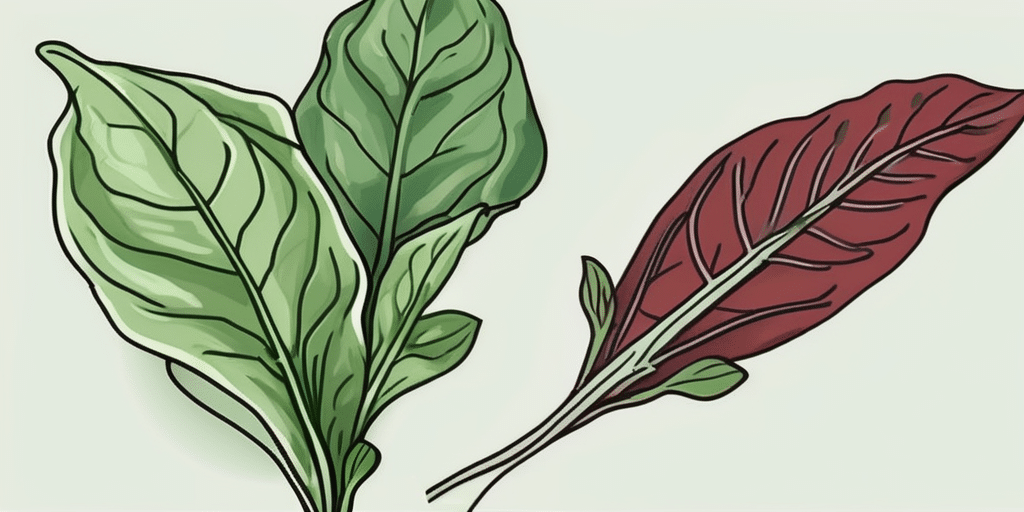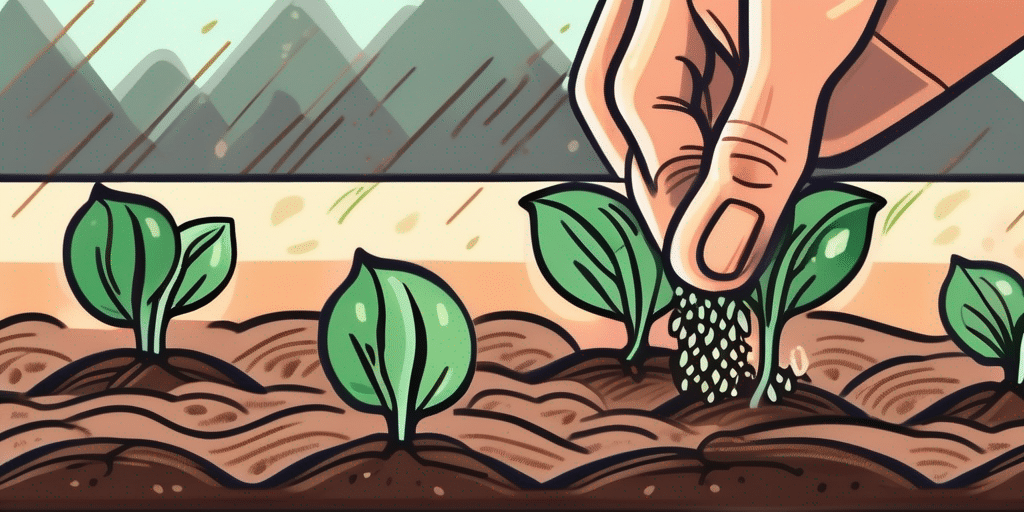Spinach is a nutritious and delicious leafy green vegetable that can be easily grown in your own backyard. Whether you’re a beginner or an experienced gardener, this comprehensive guide will provide you with all the information you need to successfully grow spinach. From understanding the nutritional benefits to harvesting and storing, we’ll cover every step of the process. So let’s dive in and start growing some spinach!
Understanding Spinach: An Overview

Before diving into the details of growing spinach, it’s important to understand the basics. Spinach is a dark, leafy vegetable that belongs to the Amaranthaceae family. It is packed with essential vitamins and minerals, making it a great addition to any diet.
Spinach, scientifically known as Spinacia oleracea, has a long and fascinating history. It is believed to have originated in ancient Persia (modern-day Iran) and was introduced to Europe in the 12th century. Spinach gained popularity in the 16th century when Catherine de’ Medici, the queen of France, declared it her favorite vegetable and brought it to the French court.
The Nutritional Benefits of Spinach
One of the reasons spinach is highly regarded is its impressive nutritional profile. It is rich in vitamins A, C, and K, as well as iron and calcium. Vitamin A is essential for maintaining healthy vision and promoting proper immune function. Vitamin C is a powerful antioxidant that supports collagen production and boosts the immune system. Vitamin K plays a crucial role in blood clotting and bone health. Iron is necessary for the production of hemoglobin, which carries oxygen throughout the body, while calcium is essential for strong bones and teeth.
In addition to these essential nutrients, spinach also contains a variety of beneficial plant compounds. It is particularly high in antioxidants, such as beta-carotene and lutein, which help protect the body against oxidative stress and reduce the risk of chronic diseases, including heart disease and certain types of cancer.
Different Varieties of Spinach
There are several varieties of spinach available, each with its own unique characteristics. Savoy spinach has crinkled leaves and a slightly sweeter taste, while smooth-leaf spinach has flat leaves and a more mild flavor. Baby spinach, on the other hand, is harvested when the leaves are small and tender. Consider your preferences and growing conditions when choosing the variety that suits you best.
In addition to these commonly known varieties, there are also heirloom varieties of spinach that have been passed down through generations. These heirloom varieties often have distinct flavors and appearances, adding diversity to your spinach garden.
When it comes to growing spinach, it’s important to consider the climate and soil conditions. Spinach prefers cool weather and well-drained soil. It can be grown both in the ground and in containers, making it a versatile choice for gardeners with limited space.
Spinach can be sown directly in the garden or started indoors and transplanted later. It is a fast-growing crop, with most varieties ready for harvest within 40-50 days. Regular watering and adequate sunlight are crucial for healthy spinach growth. It’s also important to monitor for common pests, such as aphids and leaf miners, and take appropriate measures to protect your plants.
Once your spinach plants are ready for harvest, you can enjoy them in a variety of ways. Spinach can be eaten raw in salads, sautéed as a side dish, or added to soups and stews. Its versatility and nutritional benefits make it a popular choice among home cooks and professional chefs alike.
Preparing the Soil for Spinach Plantation

Before planting spinach, it’s crucial to prepare the soil properly. Spinach thrives in well-draining soil that is rich in organic matter. Here are some tips to ensure your soil is ready for planting.
One of the first steps in preparing the soil for spinach plantation is to assess its pH level. Spinach prefers a soil pH between 6.0 and 7.0, which is slightly acidic to neutral. To determine the pH level of your soil, you can use a soil testing kit or send a sample to a local agricultural extension office for analysis. If the pH level is too low or too high, you can adjust it by adding lime to raise the pH or sulfur to lower it.
In addition to the pH level, the texture of the soil is also important for spinach growth. Spinach requires soil that is loose and crumbly to allow for good root development. If your soil is heavy and compacted, you can improve its texture by adding organic matter. Compost or well-rotted manure are excellent choices for improving soil structure. These organic materials help to break up clay particles and improve drainage, creating a more favorable environment for spinach roots.
Ideal Soil Conditions for Spinach
Spinach prefers a soil pH between 6.0 and 7.0. It also requires soil that is loose and crumbly to allow for good root development. Adding compost or well-rotted manure to the soil will improve its fertility and texture, providing the perfect growing environment for spinach.
Another factor to consider when preparing the soil for spinach is its fertility. Spinach is a leafy green vegetable that requires a nutrient-rich soil to support its growth. Organic fertilizers are highly recommended for spinach cultivation, as they provide a slow release of nutrients and improve soil health. Compost, aged manure, and fish emulsion are all excellent choices for organic fertilizers. These natural fertilizers not only supply essential nutrients to the plants but also enhance the soil’s microbial activity, promoting a healthy and balanced ecosystem.
Furthermore, it is important to ensure that the soil is well-draining. Excess moisture can lead to root rot and other diseases in spinach plants. If your soil tends to retain water, you can improve drainage by incorporating organic matter and creating raised beds. Raised beds allow excess water to drain away more easily, preventing waterlogged conditions that can harm spinach plants.
Organic Fertilizers for Spinach Growth
When it comes to fertilizing spinach, organic options are always a good choice. Avoid using synthetic fertilizers as they can lead to an imbalance in nutrients. Instead, opt for organic fertilizers such as compost, aged manure, or fish emulsion. These natural fertilizers will provide the necessary nutrients without harming the environment.
Compost is a valuable source of organic matter and nutrients for spinach plants. It enriches the soil with essential elements like nitrogen, phosphorus, and potassium, which are vital for healthy growth. Additionally, compost improves soil structure, enhances water retention, and promotes beneficial microbial activity, creating a thriving ecosystem for spinach plants.
Aged manure is another excellent organic fertilizer for spinach. It not only provides essential nutrients but also improves soil fertility and structure. Manure from herbivores, such as cows or horses, is preferable as it has a balanced nutrient composition. However, it is important to use well-rotted manure to avoid burning the plants with excessive nitrogen content.
Fish emulsion is a liquid organic fertilizer made from decomposed fish. It is rich in nutrients like nitrogen, phosphorus, and trace minerals, which are readily available to plants. Fish emulsion is easy to apply and quickly absorbed by the roots, providing an immediate boost to spinach growth. It is a sustainable and environmentally friendly option for fertilizing spinach plants.
Planting and Cultivating Spinach
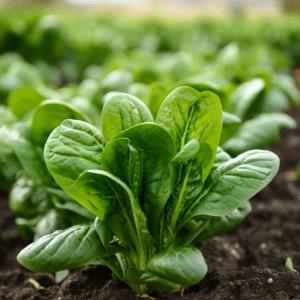
Now that you have prepared the soil, it’s time to move on to planting and cultivating the spinach plants. Follow these steps to ensure successful growth.
When to Plant Spinach
Spinach is a cool-season crop that thrives in temperatures between 35°F and 75°F. It’s best to plant spinach in early spring or late summer to avoid extreme heat or cold. Before planting, ensure the soil temperature is at least 40°F for optimal germination.
How to Plant Spinach Seeds
Sow spinach seeds directly into the prepared soil, planting them about half an inch deep. Space the seeds about 2 inches apart in rows that are 12 inches apart. Alternatively, you can start the seeds indoors and transplant them once they have reached a suitable size.
Proper Spacing for Spinach Plants
As the spinach plants grow, thin them out to allow enough space for each plant to develop fully. Leave a distance of about 4-6 inches between each spinach plant to ensure they have enough room to grow and receive adequate sunlight.
Caring for Your Spinach Plants
To ensure healthy and vigorous spinach plants, proper care is essential. Here are some important aspects to consider.
Watering Your Spinach Plants
Spinach requires consistent moisture in the soil to thrive. Water your spinach plants regularly, ensuring the soil is evenly moist. Avoid overwatering, as it can lead to root rot, but also prevent the soil from drying out completely. Mulching around the plants can help retain moisture and reduce water evaporation.
Dealing with Pests and Diseases
Like any other plants, spinach is susceptible to pests and diseases. Common pests that attack spinach include aphids, slugs, and leaf miners. Regularly inspect your plants for any signs of infestation and take appropriate measures, such as handpicking or using organic insecticides. Additionally, practice crop rotation and maintain good airflow to prevent diseases like downy mildew and leaf spot.
Harvesting and Storing Spinach
The final step in growing spinach is the rewarding process of harvesting and storing your homegrown greens.
When and How to Harvest Spinach
Spinach leaves are ready to be harvested when they reach the desired size. You can start harvesting the outer leaves while leaving the inner ones to continue growing. Gently remove the leaves from the plant, taking care not to damage the stems. If you’re planning to harvest the entire plant, cut it just above the soil level.
Best Practices for Storing Fresh Spinach
Once harvested, it’s important to store spinach properly to maintain its freshness. Start by rinsing the leaves thoroughly to remove any dirt or debris. Then, wrap the leaves in a damp paper towel or place them in a perforated plastic bag. Store them in the refrigerator, where they can stay fresh for up to a week.
As you can see, growing spinach is a rewarding and relatively straightforward process. By following these guidelines and giving your plants the care they need, you’ll soon be enjoying a bountiful harvest of fresh, nutritious spinach. So roll up your sleeves, get your hands dirty, and start your spinach-growing journey today!

